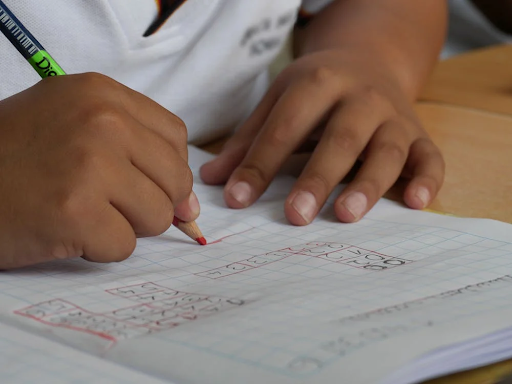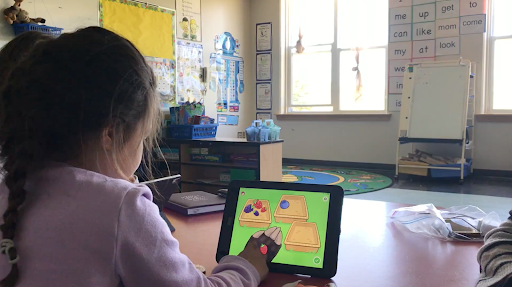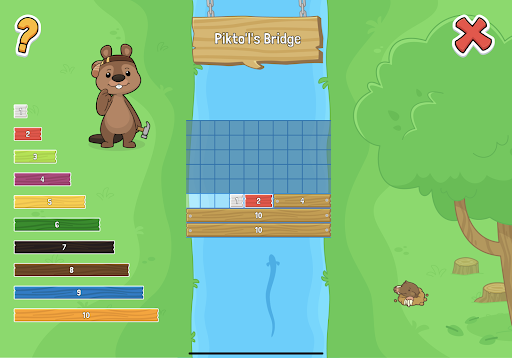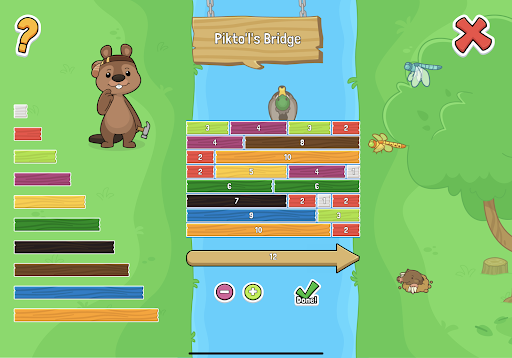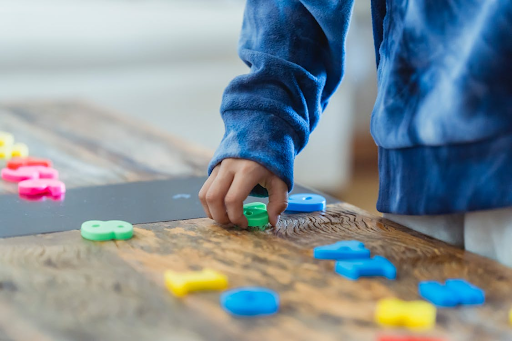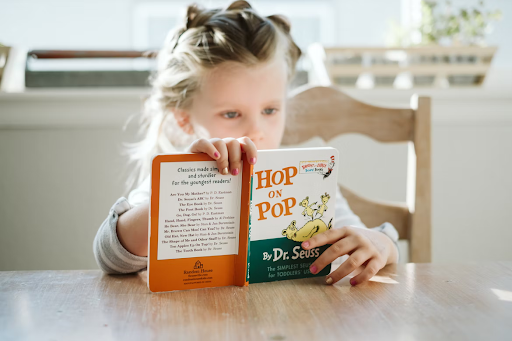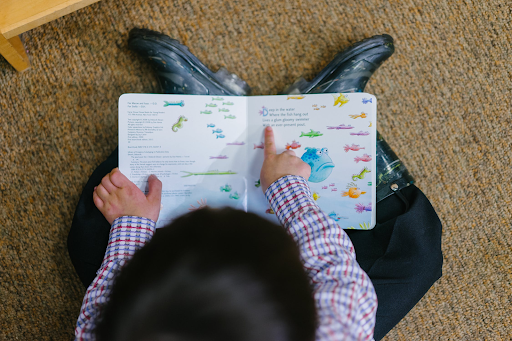Are you thinking of introducing or revamping differentiated learning in your school? If your current implementation is patchy or uneven, you might be thinking of consolidating different practices into one cohesive strategy.
Or perhaps, you want to know how differentiated instruction can be a tool to achieve a certain objective, such as improving education quality and accountability for every student.
The reasons for wanting to better understand differentiated instruction are many. This is especially true as the approach has gained massive acceptance as a means to close the achievement gap for students, especially in their early years.
With the availability of more early learning funds in recent years to advance the cause of education equity, differentiated instruction is a well-founded approach that deserves attention.
In early education, differentiated instruction provides the young learner an opportunity to develop and grow according to their own interests, abilities and strengths. Sprig Learning was founded with the aim of providing every child a fair shot at success. It recognizes differentiated instruction as one of the ways to achieve this.
Some schools and school districts have a page on their website that talks generally about differentiated instruction. They may even have a page of differentiation resources for teachers to use. It often contains third party lesson plan templates and other resources.The extent to which school teachers rely on these pages is unclear. Afterall, they are generalized and not indicative of the particular differentiated instruction strategy or policy of that school.
Especially in preK-3 education, it’s a different type of challenge altogether.
In such preschool and early primary settings, educators will often rely on the experience of fellow educators for guidance on how to apply differentiated instruction. For example, Alison, a grade K-2 literacy specialist and teacher, shares tips on how to differentiate reading instruction in her classrooms. There are many similar educator-created blogs on the web.
We wanted to look at studies, not from a teacher’s point of view, or a school leader’s point of view, but from a research perspective to understand the reality of introducing and managing differentiated instruction in school systems.
This article is an outcome of that intention. In the future, we plan to write a larger guide that covers the A to Z of introducing differentiated instruction in early learning. It will build upon many of the themes introduced in this content.
For now, this article will hopefully act as a miniguide for school district administrators and interested educators alike, and anyone else who have thought about the implications of starting or improving differentiated instruction at their respective schools.
The Challenges of Differentiated Instruction

There are many benefits of differentiated instruction, and there are strategies that exist to realize those benefits.
But if there are no objectives to begin with, the school will randomly benefit from the advantages of differentiation. From an experimental perspective, it will be unclear what impact differentiated instruction had on solving a particular challenge or achieving a particular goal.
Here are three major challenges in managing differentiated instruction. Addressing each one is a worthy goal.
Time
“The era of one-academic level per classroom model is longer the norm in most inner city schools in districts across the country”, writes Kathryn Kreitzer, educator and researcher, on the application of theory and practice of differentiation for all learners.
There is a push for more inclusive classrooms with students of mixed abilities instructed by the same teacher, where they learn alongside their peers.
This presents a challenge for teachers where lessons are customized to reflect the different learning needs of every student.
In Kreitzer’s experience, the differentiating instruction for elementary school students far exceeds the time provided by schools for preparation. It is a task that takes additional time on top of grading, data collection and other planning and administrative tasks required by teachers outside of school hours.
Indeed, it is the same experience of many educators in North America who want to pursue differentiated instruction but lament the lack of time to do so.
Brainstorm Question: How can we lessen the burden on educators when it comes to planning, executing and evaluating differentiated instruction?
Resources
It’s a big challenge to apply differentiation strategies that teach content at different academic levels, while still meeting mandated grade-level content and standards.
Teachers need the right resources in order to meet different needs of students, but such resources are not always readily available.
The curriculum and lessons change with every grade for a reason. But accepting the axiom of differentiated learning is important, which says that students will have their own ways of absorbing information. Especially in early learning, it is extremely important to observe the child and collect enough information before the differentiation process is started.
The curricular content, process of teaching, learning environment and assessments (the 4 main components of differentiated instruction) can all be creatively altered, where they meet the grade-level requirements but still provide a custom learning experience for different student groups.
But creatively altering something is open to variance, where every educator will develop their own style of differentiating. If one is committed to adopting differentiated instruction as a strategy, these four pillars of differentiated instruction require proper resources which will guide the strategy.
Brainstorm Question: How can we support educators with resources for each component of differentiation?
For example:
Content — Leveled Readers.
Process — Different Activities.
Assessments — Use of Formative Assessments (we recommend both formal and informal formative assessments).
Environment — Indoor vs outdoor classrooms/ school learning vs home learning.
Technology
If there is limited time and resources to implement a solution, technology seems like a quick fix.
It is digital, so it can encompass a lot of material in one place, reducing the burden of managing separate resources.
It also has machine-like performance, and can automate things with less likelihood of error and at a faster rate than educators would be able to achieve on their own.
But adding technology to the mix is always a challenge. Especially in education.
When we refer to the use of technology in differentiated instruction, we are not referring to the medium of learning, which can be either online, offline or blended, as it was the case for many schools during the pandemic.
But when it’s safe to do so, most educators prefer teaching in person, and more screen time during the developmental years of children is not endorsed. So by use of technology, we do not refer to it as a teaching mode, but as a tool which helps educators instruct differently in schools, with in-person classes.
Kreitzer’s research finds that tablets such as iPads are rolled out to teachers as an instruction tool, but they come with few subscriptions to academically rigorous materials.
Instead, teachers independently purchase these materials in the hope that they can help manage differentiation. There is also a lack of clarity as to how educators should supplement a curriculum with online resources. Afterall, the differentiated instruction has to be related to the existing curriculum.
So if such digital materials are made available, it’s best if they are introduced centrally, where their application matches the curriculum and has different levels that are suitable for differentiated instruction.
One of the most common themes in differentiated classrooms is the time and money educators spend out of pocket to finance the materials needed to teach students, which refers back to challenges 1 and 2. Technology can be introduced to help on both these fronts, but if educators have to spend yet again, it’s like going back to square one.
Schools and school districts are still responsible for purchasing the best and most effective resources and subscriptions for differentiation. The hardware has to be complemented with software.
Brainstorm Question: This is a two-part question. Does your existing curriculum have digital content that can be readily accessed by educators? If yes, is this content differentiated similarly to how hard copies of leveled readers would be differentiated?
The Solutions

Pondering on each of the three main operational challenges to differentiated instruction will act as a needs assessment for your school.
Using each challenge as a starting point, it’s possible to find ways to better share the workload with educators. Afterall, it is likely that they already differentiate instruction in some shape of form, with almost 98% of educators saying they differentiate weekly.
Solutions will be case specific and will analyze if there is a suitable force multiplier like technology that can complement your curriculum while differentiating it according to the 4 pillars of differentiation. Namely: content, process, assessments and environment.
But researchers agree that there are usually two conclusions that are drawn from such a fact-finding exercise.
The need for more 1) professional development and 2) collaborative planning.
There will be nuances of course, in how they apply to your situation and organization. But fastforwarding to the endgame, it’s advisable that both of these solutions are considered.
Professional Development
In the past, education administrators often divided students based on their learning needs and disabilities into relatively homogeneous classrooms. Special education teachers then differentiated curriculum based on the student’s overall instructional level.
Differentiated instruction is not only for those kids who require such special education needs, but for all students. Indeed, Sprig Learning is an advocate for holistic learning, where special effort is made to ensure all students have the opportunity to succeed through understanding their unique strengths, needs and challenges.
It would be unfair to place a student in a self-contained classroom where they do not have interaction with the rest of their peers. Tomlinson, Brighton and Hertberg write about the significant academic diversity in inclusive or general education classrooms. They describe the need for professional development (PD) in all schools to establish norms for differentiated instruction.
Researcher and former district administrator, Teresa Wallace, writes on the lack of necessary training to learn how to be better practitioners of differentiation. She refers to the National Institute of School Leadership, which lists the best practices for effective professional development. The Institute recommends the inclusion of educators when it comes to the planning process and the selection of resources. It promotes professional development that involves continuous feedback from peers and administrators.
There is PD, and then there is PD that is focused on differentiated instruction. Cindy Strickland, author of Professional Development for Differentiating Instruction, lists the following complaints from educators for resenting staff development days.
- “Drive-by” workshops
- One-size-fits all presentations
- Focus on rotating fads
- Lack of follow-up
Brainstorm Question: When strategizing and organizing PD, is it possible to design sessions that have long-term orientation, allow for the input of individual teachers, and focus on an achievable goal?
Collaborative Planning
Besides professional development, schools and districts need to provide time to educators for collaborative planning.
Collaborative planning happens when the general education teacher meets a student’s case managers, service providers, and/or co-teachers to best determine the adaptation and modification of curriculum and standards for differentiated instruction.
Most students will not need a case manager or service provider for example, which are terms used in individualized education programs in the US for special needs students. Canada also has such individualized education plans for both students with gifted abilities and those who require special assistance.
But all students come from a community. This includes their families, caregivers and other important people who make a difference in their everyday lives. These community members also deserve a seat at the collaborative planning roundtable. By considering the perspectives of everyone, the instruction for a particular student or group of students can be truly differentiated.
When collaboratively planning for a student, it’s important to be student centric, where the student’s support system works around them to provide an optimum learning experience. The delivery of such a learning experience can be both inside and outside the classrooms.
Regardless of the location, a student’s goals (as outlined in an initial assessment) have to be supported by those who are involved in the collaborative planning process.
Thus, the initial assessment acts as both a differentiator and goal-setter. But it is different from a standardized assessment, in that it is part of an ongoing assessment process where such initial assessments are followed by formative assessments.
VanTassel-Baska & Stambaugh in their research have noticed that students arrive into mixed ability classrooms at not only very different academic levels, but with different interests and experiences as well. So there is ample reason to gain a more holistic understanding of a student, which can only come about by engaging all involved in collaborative planning. Sprig facilitates such a process with holistic assessments which involves every person in the child’s support system.
It is suggested by researchers that educators share the load of differentiation with their co-teachers by creating and sharing academic materials and resources. Significant change can only occur when administrators create a school that:
- Has high expectations for teachers to differentiate and show improvements with data.
- Institutionalizes collaborative planning time for both teachers and co-teachers.
- Upholds the educational philosophy that all students are capable of learning when the content and process are appropriate for the student’s instructional level.
Brainstorm Question: What roles are involved in collaborative planning for a young student and what is the extent of collaboration between such roles?
For example:
Do they meet a certain number of times?
Are they aligned on the same outcomes of differentiated instruction?
The Three Focus Areas of Differentiated Instruction

It’s good to have an awareness of the main stumbling blocks that prevent a school or school system from setting up differentiated instruction. By understanding the complexity and severity of existing problems, solutions arise which tend to converge around professional development and collaborative planning.
Let’s now look at a scoping review that was done on the last 20 years of research on differentiated instructional strategies at schools. Elementary schools made up the majority of the sample.
It gives us an indication of what educators understand differentiation to be, how it’s possible for administrators and other decision makers to influence educators and what can be gained from differentiation.
Teacher Practices
If we want to improve something, we need to understand what is being done currently.
Differentiated instruction is only gaining more prominence recently. In Canada for example, only an average of 7.2% of the course credits in bachelor of education programs are dedicated to differentiated teaching practices for pre-service teachers.
If left up to the teachers to define, there isn’t a clear consensus as to what the definition of differentiation actually is. In a lot of the cases, part of the study included allowing implementers of differentiation to define the task they were carrying out.
The most dominant interpretation of differentiation was equating it to streaming and grouping by abilities. Streaming is the act of grouping students into classes for most of their lessons. Obviously, this is not differentiation, as we are referring to a more heterogeneous classroom throughout this article.
But it’s an important reminder that we cannot merely group students into separate classrooms for differentiated instruction, and thus must operate out of that understanding.
For the studies that first established the premise that differentiation was the act of customizing content, process, product and learning environments for inclusive classrooms, it was found that most teachers differentiated only in one domain — either content or process.
Only 2 of the 12 studies differentiated on content, process and product (assessments). Product differentiation was found to be less common than content or process differentiation.
For product differentiation, educators typically provided tiered assignments, adapted the number of tasks, and provided more time for certain students to work on those tasks. Using pre-assessments or ongoing formative assessments were less common.
Learning environment, despite being one of the four components of differentiated instruction, had its own category of studies. It was seen that teachers allowed students to work on their own or introduced group work.
Brainstorm Question: How can we better bring product differentiation (assessments) and learning environment into the manifold of differentiated instruction?
Influences on Teacher’s Practices
Educators are the engine of differentiated instruction, collaborating with them is essential for the success of students.
School context was found to be a significant influence on practicing differentiation. The organizational environment of the school could either promote or discourage the use of differentiated instruction.
Teacher’s frequency of using differentiation was heavily influenced by the level of diversity among students and whether the school climate encouraged a shared commitment among staff to offer flexibility and choice in teaching practices, learning activities and assessment.
An active team culture amongst staff was associated with more sophisticated differentiated teaching practices.
It was found that when educators learned about the process of differentiated instruction together over a period of time, their understanding and implementation of the practice became richer. But this required whole-school reform, a top down approach that included proactive planning for differentiation of all learners. Flexible grouping and ongoing monitoring was commonly used to guide such planning.
The school principal’s vision and actions had a strong sway on teacher’s use of differentiation as well. Schools with leaders communicating a clear commitment for differentiation lead to the development of a strong sense of collective responsibility.
Teacher’s practices were supported by school leaders who purchased resources and provided ample opportunities for teachers to collaborate on sharing resources and engage with other expert teachers.
Professional Learning Communities and initial teacher education led to greater implementation of differentiated teaching practices as well as teacher’s self-efficacy in using such practices, and increasing their ambition and persistence.
School leaders who attended professional learning sessions, encouraged teacher autonomy and demonstrated genuine commitment to long-term change were more likely to achieve differentiation success at their schools.
Technology was viewed as a differentiation enabler. Application of technology was limited to formative assessments, and differentiation of process and product by learning profile and student interest.
There is a lot here to digest. But it’s interesting to note how often collaborative planning and professional development come up, solutions we have covered in the last section. Beside these two, the following stand out as drivers of effective differentiated instruction among educators:
- Organizational endorsement of differentiated instruction
- Appropriate purchase of resources
Brainstorm Question: How is it possible to balance offering autonomy to educators while still mandating a certain guideline for differentiated instruction?
Impact of Differentiation
Understanding what we want out of differentiated instruction is just as important as achieving differentiated instruction.
Reading skill, curricular achievement and student engagement were the three most common outcome measures of differentiation in the scoping review. The impact on student learning mostly varied between neutral to positive.
If you are looking for outcome measures, the three outcomes of reading skill, curricular achievement and student engagement would be a good place to start, as so much prior research has been done on them already. But that is not to dissuade you from picking other goals that are pertinent to your community and school.
Sprig Learning’s programs are inclusive by design and work with students across all literacy and numeracy needs and abilities. In early education, the acquisition of oral language is a critical outcome to measure which impacts other subsequent learning outcomes.
Brainstorm Question: What other objectives can you think of that would be an ideal outcome from undertaking a differentiated instruction plan?
Strategy Tips on How to Apply Differentiated Instruction

Thus far, we have covered the challenges that exist to achieving differentiated instruction, the proposed solutions, and the reality of its implementation as it pertains to practices, influences and outcomes.
But there is more. No two schools are exactly the same, and guidance is required when it comes to using all this knowledge to inform a particular differentiated instruction strategy. We have devised 3 rules, based on the work of experts in this field.
Rule 1: Know Your Students
John McCarthy, education consultant, describes the learner relationship model. It consists of what teachers prepare and how students engage. There is a student response for every component of a differentiated instructional strategy.
Students demonstrate different readiness to the content, different interests to the processes, and end up with different learning profiles as they are formatively assessed.
No matter what differentiated instruction strategy is applied, it ultimately has to appeal to the students. “Getting to know kids as individuals through one-on-one conferences is the backbone of differentiated reading”, says Laura Robb, author, teacher and reading expert.
Rule 2: Start Somewhere. Start Slow If Needed.
Carol Ann Tomlinson, considered the pioneer of differentiated instruction, says “start with a few low-prep strategies.”
Indeed, having some degree of differentiated instruction is better than having no differentiation at all. Ideally, you would want to differentiate the content, the process, the product (assessments) and the learning environment. But differentiating just one of these is a good start.
Offering students more options of learning materials and choices of how they want to demonstrate their understanding is a healthy start. If it’s too much work to change current lesson plans, it is recommended to at least integrate one differentiated lesson per unit.
Rule 3: Leverage Data
In a systematic synthesis of the research on principals’ effect on schools, the types of leadership behaviors covered in this article such as facilitating collaboration amongst educators and developing professional learning communities were driven by people skills, instruction skills and organization skills.
Strategic data use was one of the organization skills listed where educators had access to students’ data and principals had access to educators’ data. It created a data-driven approach to differentiated instruction, where educators and administrators could jointly decide on what was working and what had to be changed.
More to Come
The School Superintendents Association stresses the importance of informed leadership when it comes to the application of differentiated instruction. In closing, we thank you for taking the time to read The Unrivaled Miniguide to Introducing Differentiated Instruction in Early Learning.
It’s our attempt at providing the bird’s eye view of differentiated instruction as it is practiced today. If you have any questions, please feel free to contact us at letstalk@spriglearning.com.
If you like what you read, please subscribe to the Sprig Blog. In the near future, we will release a longer version of this miniguide with more insights, tips and rules to follow. Sprig Learning believes in differentiated instruction as a strategy to close the achievement gap. Help us to help every child have a fair shot at success.

